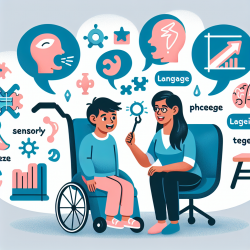As practitioners dedicated to creating the best outcomes for children with Autism Spectrum Disorder (ASD), staying informed about innovative and evidence-based treatments is crucial. One such promising intervention is Transcranial Photobiomodulation (tPBM). A recent study titled Transcranial photobiomodulation in children aged 2–6 years: a randomized sham-controlled clinical trial assessing safety, efficacy, and impact on autism spectrum disorder symptoms and brain electrophysiology provides compelling data that tPBM can be a safe and effective treatment for young children with ASD.
In this randomized, sham-controlled clinical trial, thirty children aged 2-6 years with a prior diagnosis of ASD were treated with near-infrared light pulses directed at selected brain areas. The treatment was administered twice a week for eight weeks using an investigational device called Cognilum™. The study utilized the Childhood Autism Rating Scale (CARS) to assess changes in ASD symptoms and collected electroencephalogram (EEG) data to examine brain electrophysiology.
Key Findings
- Symptom Reduction: The study found a significant reduction in CARS scores for the active group compared to the sham group. The difference in the change in CARS scores between the two groups was 7.23 points (p = 0.011), indicating a clinically meaningful improvement.
- Brain Electrophysiology: EEG data showed trends towards a reduction in delta power and an increase in theta power over time in the active group, suggesting potential positive changes in brain function.
- Safety: No moderate or severe side effects were reported, affirming the safety of tPBM in this age group.
Implications for Practice
The outcomes of this study suggest that tPBM can be an effective and safe addition to the therapeutic arsenal for treating ASD in young children. Here are a few ways you can implement these findings in your practice:
- Consider tPBM as a Complementary Therapy: Given its non-invasive nature and positive outcomes, tPBM can be integrated with existing behavioral and pharmacological therapies to enhance overall treatment efficacy.
- Monitor Brain Electrophysiology: Utilizing EEG to monitor changes in brain wave patterns can provide valuable insights into the efficacy of tPBM and other treatments, helping tailor interventions to individual needs.
- Educate and Engage Parents: Inform parents about the potential benefits and safety of tPBM. Engaging them in the treatment process can lead to better adherence and more significant improvements in their child's symptoms.
Encouraging Further Research
While the findings are promising, larger studies are needed to further validate the efficacy and safety of tPBM. Practitioners are encouraged to stay updated on the latest research and consider participating in or supporting further studies to expand the evidence base for tPBM in treating ASD.
To read the original research paper, please follow this link: Transcranial photobiomodulation in children aged 2–6 years: a randomized sham-controlled clinical trial assessing safety, efficacy, and impact on autism spectrum disorder symptoms and brain electrophysiology.










